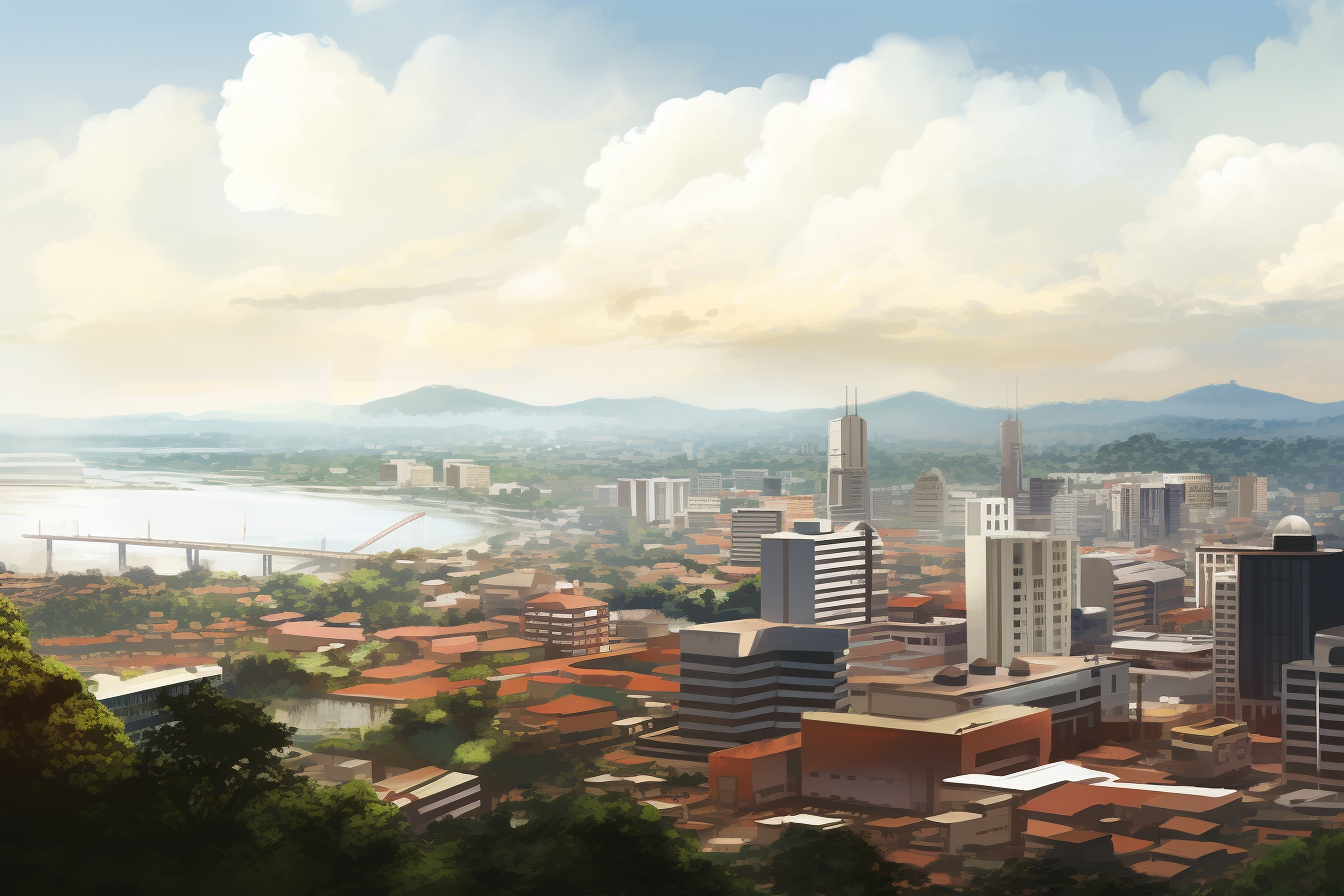A Timeline of Cameroon
A broad timeline of Cameroon.

Early Inhabitants and Hunter-Gatherers (circa 8000 BC - 2000 BC)
The earliest evidence of human settlement in Cameroon dates back to around 8000 BC. These early inhabitants were primarily hunter-gatherers, relying on the abundant natural resources of the region.
Bantu Migrations (circa 2000 BC - 500 AD)
The Bantu-speaking people began migrating into the region around 2000 BC. They brought with them advanced agricultural techniques and ironworking skills, which led to the establishment of more permanent settlements.
Sao Civilisation (circa 500 AD - 1500 AD)
The Sao civilisation emerged around Lake Chad and extended into northern Cameroon. Known for their intricate pottery and metalwork, the Sao people had a complex social structure and engaged in trade with neighbouring regions.
Kanem-Bornu Empire Influence (circa 700 AD - 1400 AD)
Northern Cameroon came under the influence of the Kanem-Bornu Empire, one of the great African empires of the time. This led to the introduction of Islam and the Arabic script in the region.
Kingdoms and Chiefdoms (circa 1300 AD - 1600 AD)
Various kingdoms and chiefdoms began to form in the southern and western parts of Cameroon. Notable among these were the Bamum and Bamileke kingdoms, each with its own unique traditions, governance structures, and art forms.
Portuguese Contact (1472 AD)
The Portuguese explorer Fernando Po was the first European to arrive in Cameroon. He named the Wouri River 'Rio dos Camarões' (River of Prawns), which eventually gave the country its name. However, European influence remained minimal during this period.
Emergence of Coastal Kingdoms (1600 AD - 1650 AD):
In the early 17th century, coastal kingdoms like Douala and Bonny began to gain prominence. These kingdoms initially dealt in commodities like ivory and palm oil and were trading centres for both the transatlantic and trans-Saharan slave trades.
Diverse Slave Trade Networks (1650 AD - 1750 AD):
While the transatlantic slave trade with European powers became increasingly significant, the kingdoms were also involved in the trans-Saharan slave trade, which was primarily Islamic. Slaves were taken from Cameroon to North Africa and the Middle East, in addition to being sent across the Atlantic.
Economic and Social Impact (1750 AD - 1800 AD):
The involvement in both transatlantic and trans-Saharan slave trades had a profound impact on the social and economic fabric of these coastal communities. It brought wealth to the ruling elite but led to depopulation and social disruption, as large numbers of people were captured and sold into different forms of slavery.
Fulani Jihad and Adamawa Emirate (1800 AD - 1830 AD):
The Fulani Jihad, led by Usman dan Fodio, reached northern Cameroon in the early 19th century. This led to the establishment of the Adamawa Emirate, which became a significant Islamic political entity in the region.
Cultural and Religious Transformation (1830 AD - 1860 AD):
The establishment of the Adamawa Emirate led to a deeper entrenchment of Islam in northern Cameroon. Mosques were built, Islamic schools were established, and the Arabic script was adopted for writing local languages.
Political Consolidation and Resistance (1860 AD - 1884 AD):
The emirate consolidated its power through military campaigns and diplomatic alliances. However, it also faced resistance from indigenous communities who were reluctant to adopt Islam or come under the emirate's rule.
Colonial Period (1884 AD - 1960 AD)
Cameroon became a German protectorate in 1884. After World War I, it was divided between France and Britain as League of Nations mandates. The French and British administrations had different impacts on their respective territories, shaping the modern state's linguistic and cultural diversity.
Independence and Unification (1960 AD - 1982 AD)
Cameroon gained independence from France in 1960, followed by the reunification of British Southern Cameroons in 1961. The country became a federal republic and later a unitary state in 1972.
Contemporary Period (1982 AD - Present)
Paul Biya assumed power in 1982 and has been in office since then. The country has faced various challenges, including political unrest, corruption, and ongoing conflicts in the Anglophone regions.





